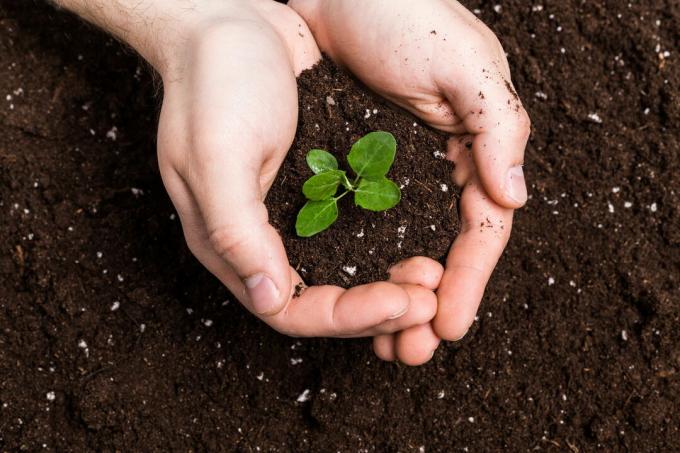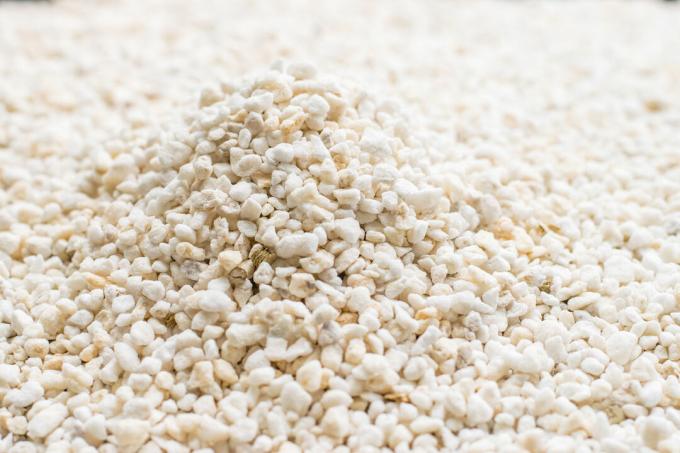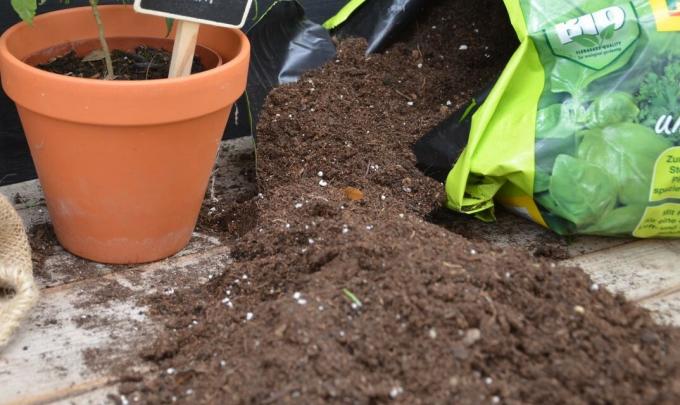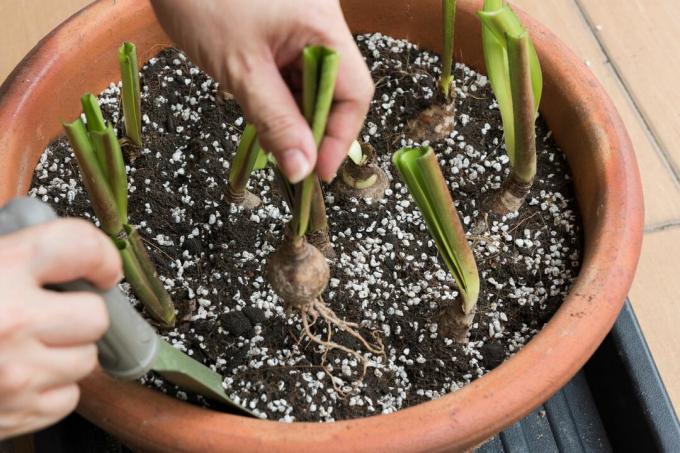Did you find styrofoam in your potting soil? You can find out what the little white spheres are all about here.
So what is that? You have just bought an expensive herb soil, but when you open the bag, you immediately notice white globules. White, round and light? It can only be styrofoam! And you don't want such a plastic in your bed. No need to worry: the white globules are not the familiar packaging material, but perlite, a special type of rock. And this is by no means unwelcome - it even helps our plants to feel more comfortable in the substrate.
Perlite in potting soil and its benefits

The perlite rock, which is mainly mined in open-cast mining in eastern Europe and the Mediterranean, does not find its way into the plant substrate by chance. The white parent rock is formed from volcanic lava under certain conditions. In order for the rock to get its useful structure for the potting soil, the volcanic rock has to be burned at high temperatures (800 to 1200 ° C). The water contained in the raw rock causes an explosive popping up, which leads to the porous structure of the known aggregate for substrates. This process is similar to turning corn kernels into popcorn. The increase in volume that the perlite experiences as a result of the heat is considerable: the bloated rock can be up to ten times larger after the firing process. By the way: In order to distinguish the porous mineral in the substrates from the parent rock perlite, experts refer to it as expanded perlite.

Thus, expanded perlite in the potting soil - even if it looks like this - is not artificial and has absolutely nothing to do with styrofoam. The porous structure that the parent rock receives due to high temperatures is the secret for its use in potting soil: thanks to one thing With a pore volume of up to 95%, it ensures excellent ventilation of the substrate - the small white stones are ideal Soil improver. It also stores water in its fine pores and ensures that excess moisture can run off better: waterlogging no longer has a chance. Especially for plants with sensitive roots or CuttingsPerlites, which have yet to develop their roots, are therefore true heroes, which is why they are mainly found in potting soil or herbal soil.

Another advantage - especially during propagation - is that expanded perlite due to the high Temperature is sterile and thus the risk of infection of the small, sensitive plants is reduced will. In addition, the mineral material is very weather-resistant, so that it only degrades very slowly. This in turn guarantees a "structurally stable" potting soil: it does not come to a collapse so quickly and consequently the substrate to compact, than is the case, for example, with organic materials such as rice husks, which also serve to improve the air capacity in the earth should.

Due to its good physical properties, expanded perlite is used for the following:
- Improvement of the air capacity and structural stability in substrates and potting soil
- Higher rooting success with cuttings
- Reduced risk of waterlogging in long-lived potted plants and crops that are sensitive to moisture
- Incorporation into soils that tend to waterlogging to loosen them up (also in beds)
- Use as heat and sound insulation material in house construction
Perlites are often found in soils as being more environmentally friendly Peat substitute used. Find out what other alternatives for peat there are in this article.

